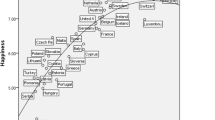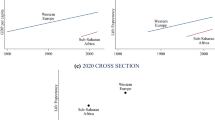Abstract
For-profit popular music concerts, a seldom studied event, may create sizeable economic impacts in a local economy. Using information from a survey of more than 1,000 concert goers to a Grateful Dead performance in Las Vegas and RIMS II multipliers, we estimate income and employment impacts. We conclude that the potential large spill-overs effects of such an event should not be ignored.
Similar content being viewed by others
References
The American Assembly (1984) The Arts and Public Policy in the United States. Prentice-Hall, Englewood Cliffs.
Balfe, Judith H. (1993) Paying the Piper: Causes and Consequences of Art Patronage. University of Illinois Press, Urbana.
Benedict, Stephen (1991) Public Money and the Muse. W. W. Norton & Company, New York.
Blau, Judith R., Newman, Laurie, and Schwartz, Joseph E. (1986) “Internal Economies of Scale in Performing Arts Organizations”, Journal of Cultural Economics 10: 63–76.
Blaug, Mark (1976) The Economics of the Arts. Westview Press, Boulder.
Blaug, Mark (1980) “A Postscript to the Edinburgh Conference on Cultural Economics”, in William S. Hendon, James L. Shanahan, and Alice J. MacDonald (eds.), Economic Policy for the Arts. Abt Books, Cambridge.
Cummings, Milton C. and Katz, Richard S. (1987) The Patron State: Government and the Arts in Europe, North America, and Japan. Oxford University Press, New York.
Cwi, David and Lydall, Katherine (1977) Economic Impact of the Arts and Cultural Institutions: A Model for Assessment and a Case Study in Baltimore. Research Division, National Endowment for the Arts, Washington, DC.
Deboer, Larry (1985) “Is Rock'n'Roll a Symptom of Bumol's Disease?”, Journal of Cultural Economics 9: 48–58.
DiMaggio, Paul J. (1986) Nonprofit Enterprise in the Arts. Oxford University Press, New York.
DiNoto, Michael J. and Merk, Lawrence H. (1993) “Small Economy Estimates on the Impact of the Arts”, Journal of Cultural Economics 17: 41–53.
Frey, Bruno (1986) “The Salzburg Festival: An Economic Point of View”, Journal of Cultural Economics 10: 27–44.
Frey, Bruno (1994) “The Economics of Music Festivals”, Journal of Cultural Economics 18: 29–39.
Frey, Bruno and Pommerehne, Werner W. (1989) Muses and Markets: Explorations in the Economics of the Arts. Basil Blackwell, Cambridge.
Guillard, Jean-Pierre (1985) “The Symphony as a Public Service: The Orchestra of Paris”, Journal of Cultural Economics 9: 35–47.
Hansmann, Henry (1986) “Nonprofit Enterprise in the Performing Arts”, in Paul J. DiMaggio (ed.), Nonprofit Enterprise in the Arts. Oxford University Press, New York.
Lewis, Justin (1990) Arts, Culture, and Enterprise: The Politics of Art and the Cultural Industries. Routledge, New York.
Margolis, Michael (1994) Free Expression, Public Support, and Censorship. University Press of America, Lanham.
Mitchell, Clare J. A. (1993) “Economic Impact of the Arts: Theater Festivals in Small Ontario Communities”, Journal of Cultural Economics 17: 55–67.
Mulcahy, Kevin V. (1986) “The Arts and Their Economic Impact: The Values of Utility”, The Journal of Arts Management and Law 16: 33–48.
Netzer, Dick (1978) The Subsidized Muse: Public Support for the Arts in the United States. Cambridge University Press, Cambridge.
Pankratz, David B. (1989) “Arts Policy and Older Adults”, Journal of Arts Management and Law 18: 13–64.
Pankratz, David B. and Morris, Valerie B. (1990) The Future of the Arts: Public Policy and Arts Research. Praeger, New York.
Rickman, Dan and R. Keith Schwer (1995) “A Comparison of the Multipliers of IMPLAN, REMI, and RIMS II: Benchmarking Ready-Made Models for Comparison”, The Annals of Regional Science 29: 363–374.
Throsby, David and Withers, Glenn (1985) “What Price Culture?”, Journal of Cultural Economics 9: 1–33.
U.S. Department of Commerce (1992) Regional Multipliers: A User Handbook for the Regional Input-Output Modeling System (RIMS II). U.S. Government Printing Office, Washington, D.C.
Woodcook, George (1985) The State and the Arts in Canada. Douglas & McIntyre Ltd., Vancouver.
Zeigler, Joseph W. (1994) Arts in Crisis. Chicago Review Press, Chicago.
Author information
Authors and Affiliations
Rights and permissions
About this article
Cite this article
Gazel, R.C., Schwer, R.K. Beyond Rock and Roll: The Economic Impact of the Grateful Dead on a Local Economy. Journal of Cultural Economics 21, 41–55 (1997). https://doi.org/10.1023/A:1007372721259
Issue Date:
DOI: https://doi.org/10.1023/A:1007372721259




